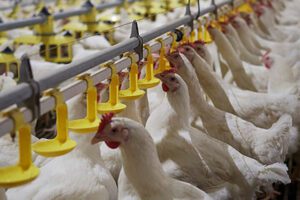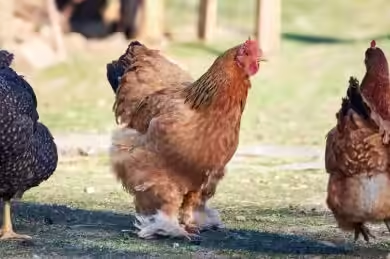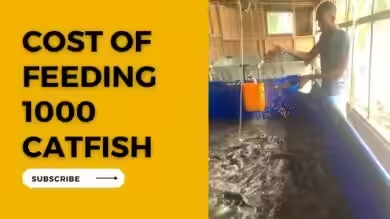Last updated on July 30, 2025
Look, if you’re raising birds—whether it’s a backyard flock or a massive commercial operation—you’ve probably heard the old adage: “You are what you eat.” In poultry farming, that often translates to an intense focus on feed quality and quantity.
And don’t get me wrong, feed is critical. You pour so much time, effort, and hard-earned cash into getting that perfect mix, right? But as someone who’s spent years on the farm, getting my boots dirty and dealing with everything from thriving birds to unexpected flock issues, I’ve learned a foundational truth that often gets overlooked. It still surprises me how often it’s missed: Clean water is, hands down, more important than feed in poultry farming.
That might sound like a bold claim, especially with feed costs being what they are. I mean, who isn’t constantly optimizing their feed budget? But trust me, ignore your water, and even the most expensive, scientifically formulated feed will turn into a costly waste. It’s like putting cheap fuel in a Ferrari—pointless. Let’s break down why.
TL;DR: Clean Water vs. Feed
- Survival: Birds can survive days without feed—but only hours without water.
- Impact of Dirty Water: Leads to less feed intake, slower growth, and more disease.
- Benefits of Clean Water: Improves Feed Conversion Ratio (FCR), enhances egg quality, and boosts overall farm profitability.
The Foundational Role of Clean Water in Poultry Health
Think about your own body. What can you go longer without: food or water? It’s water, every single time. The same goes for your birds. When it comes to poultry health, water is the absolute bedrock. Without it, everything else just… crumbles.
Why is Water the Most Critical Nutrient for Poultry?
Poultry bodies are incredibly watery—up to 70% water. It’s not just a beverage; it’s essential for almost every bodily function. A chicken survives days without feed, but only hours without water.
Takeaway: Water is the most critical nutrient for poultry survival, even more so than feed, due to its indispensable role in all bodily functions.
I once had a power outage take out a pump on a hot summer day. Within hours, my birds looked stressed, panting, miserable. Their feed intake plummeted. My heart sank. It was a stark, immediate, and frankly, terrifying reminder of water’s critical role—a lesson I won’t soon forget.
How Does Water Affect a Chicken’s Body?
Clean Water is the ultimate multitasker in a bird’s system. It facilitates essential metabolic processes:
- Temperature Regulation: Chickens don’t sweat. They rely on evaporative cooling through panting, which requires plenty of water. Without it, heat stress sets in fast. Ever tried a marathon without water? It’s that bad.
- Metabolism: Every chemical reaction turning feed into energy, growth, or eggs requires water. It’s like engine oil—without it, nothing runs smoothly.
- Nutrient & Waste Transport: Water acts as the internal highway, delivering nutrients to cells and flushing out waste. If this internal plumbing is clogged or dry, nutrient delivery and waste removal become severely hampered.
How Does Water Quality Impact Health and Disease?
Poor water quality really stings your bottom line. Water can be a silent killer, significantly impacting avian health. It’s often the sneaky culprit behind many unexplained farm problems.
- Weakened Immune System: Contaminated water stresses a bird’s system, leaving them vulnerable to common diseases. Research consistently shows flocks with poor water quality experience higher rates of respiratory and digestive issues. This directly impacts disease prevention poultry relies on. For proactive health, read How to Keep Your Noilers Naturally Healthy & Profitable.
- Pathogen Vector: Water lines, especially if not cleaned regularly, breed harmful bacteria (E. coli, Salmonella) and viruses. I’ve seen entire flocks struggle with chronic, low-level infections traced back to biofilm in water pipes—a clear issue of inadequate pathogen control. It’s frustrating when one simple oversight undermines everything else you’re doing right.
- Beyond E. coli and Salmonella: While those are common, water can also transmit other serious issues:
- Coccidiosis: A parasitic disease spread through oocysts (parasite eggs) that contaminate water sources, causing intestinal damage and malabsorption.
- Fowl Cholera: Caused by Pasteurella multocida, it can lead to appetite loss, respiratory signs, high mortality, and is often spread through contaminated water. (For more details on poultry diseases, consider our deeper guide on Common Poultry Ailments and Treatments if available).
- Dehydration Symptoms: Reduced water intake immediately leads to reduced feed intake, lethargy, ruffled feathers, and significant drops in egg production or growth. This illustrates the critical link between dehydration and overall performance. For young birds, understand the Top 10 Reasons Day-Old Chicks Die Early. Don’t wait until chicks are gasping; proactive steps are vital!
Water Quality Parameters: What to Look For
It’s not just about having some water; it’s about having good water. Know what’s in your water for optimal water quality chickens receive:
- What is the ideal pH for poultry water? The ideal pH is between 6.0 and 6.8. Levels outside this range affect gut health and reduce vaccine effectiveness. Ever noticed how some water just tastes ‘off’? Birds are sensitive too!
- Total Dissolved Solids (TDS): High TDS indicates many dissolved minerals, which can affect palatability and have laxative effects. Studies indicate that TDS levels above 1,000 ppm can start to negatively impact water intake and growth rates.
- Minerals: Excess iron or manganese can block pipes and impact water taste. Imagine drinking from a rusty tap. Not appealing, right?
- Bacterial Contamination: Regular testing for coliforms is non-negotiable. Don’t guess—test. A 2023 university study highlighted that flocks with consistently monitored water quality saw a 15% reduction in common respiratory issues (e.g., Journal of Applied Poultry Research, 2023). This isn’t just a number; it means fewer sick birds, less medication, and less labor. A clear win for the farm, demonstrating vital water sanitation. That’s money back in your pocket! (For a comprehensive look at water testing, explore our Poultry Farm Water Testing Guide if available).
5 Signs Your Water Is Hurting Your Birds
Takeaway: Don’t wait for a crisis. Watch for these indicators that your water system needs attention:
- Reduced Water Intake: Birds are simply drinking less than usual. A common guideline: chickens drink about 1.6 to 2 times their feed intake by weight. If this ratio is off, investigate.
- Wet Litter: Excessive moisture in the litter can indicate leaky drinkers, but also increased water excretion due to poor water quality.
- Diarrhea or Loose Droppings: A common symptom of bacterial contamination or mineral imbalances in water.
- Reduced Feed Consumption: Birds won’t eat if they’re not properly hydrated, leading to poor growth.
- Unusual Odor or Taste in Water: If you notice a chlorine, sulfur, or metallic smell/taste, your birds likely do too, and they’ll avoid it.
Understanding the Importance of Quality Feed
Of course, this isn’t to downplay the role of feed. Water may be king, but feed is still the engine behind growth. Feed is essential—and one of the biggest investments in poultry farming. It fuels growth, no doubt.
Feed as a Source of Energy and Nutrients
Feed provides the raw building blocks for proper poultry nutrition:
- Proteins: For muscle, feather, and egg development in broiler chickens and layer hens. For those specifically working with broilers, understanding Must-Have Medications for Broiler Chicks can be crucial, though prevention through water quality is always preferable.
- Carbohydrates & Fats: For energy to grow, move, and produce.
- Vitamins & Minerals: Crucial micronutrients for everything from bone health to eggshell quality. (For a deeper dive into optimal feeding, see our Poultry Nutrition Guide if available).
Different Feed Stages and Their Purpose
We all know the drill: starter feed for rapid initial growth, grower for development, and layer for egg production. Each is scientifically formulated for a specific purpose in livestock management. Looking to speed up growth? Delve into How to Make Noiler Grow Fast.
Impact of Feed Quantity and Quality
Getting your feeding program right is key. Underfeeding stunts growth; overfeeding wastes money. Spoiled or moldy feed (watch out for mycotoxins!) can be as devastating as bad water. It’s a fine balance, isn’t it?
The Interdependence: Why Water Enables Feed Effectiveness
Here’s the crux: water unlocks your feed’s value. The importance of water in poultry cannot be overstated. Without good water, all that amazing feed might as well be… expensive dust.
How Does Water Improve Feed Digestion and Nutrient Absorption?
Water is paramount for nutrient absorption poultry needs to thrive. It enables:
- Saliva & Initial Digestion: Water is crucial for salivation and moistening feed, aiding its passage down the digestive tract. It’s like giving food a smooth slide into the stomach.
- Enzyme Activity: Digestive enzymes, which break down nutrients, need water to function effectively. Without enough, these enzymes are practically on strike.
- Absorption: Nutrients can only be absorbed into the bloodstream once dissolved in water. If not dissolved, not absorbed. Simple as that.
Metabolism and Utilization of Feed: Why Water Matters
Even if nutrients are absorbed, water is still needed to convert them into usable energy and tissue. If a bird is dehydrated, its metabolism slows. It can’t efficiently turn that expensive feed into growth or eggs. This leads to an inefficient feed conversion ratio (FCR)—meaning more feed for less output. It’s like pouring gas into a leaky tank; you’re not getting the mileage you paid for.
What is Feed Conversion Ratio (FCR)? FCR is a measure of an animal’s efficiency in converting feed mass into increased body mass. A lower FCR indicates better efficiency and profitability. (For a complete breakdown and tools, see our FCR Calculator and Guide for Poultry if available).
Can Bad Water Make Feed Useless?
This is a painful reality for many farmers. You might buy the best feed, but if birds aren’t drinking enough, or if water quality is poor, they simply won’t eat as much, or won’t properly digest what they do eat.
I once visited a farm meticulous about its premium organic feed—truly top-notch—but couldn’t understand why birds were undersized. My curiosity was piqued. A quick check of water lines revealed nasty biofilm and a sulfur smell. Birds actively avoided the water, and consequently, weren’t eating optimally. All that good feed was essentially wasted, impacting farm productivity. It’s genuinely heartbreaking to see good resources squandered, isn’t it? For pitfalls, see Mistakes That Make Noiler Farmers Lose Money and How to Avoid Them.
Impact on Poultry Performance and Farm Profitability
Prioritizing feed over water directly impacts your wallet, affecting farming operations. It’s not just about healthy birds; it’s about a healthy business.
Growth Rates and Production Yields
Adequate water intake correlates directly with good feed intake and optimal growth. For layers, poor water impacts egg size and shell quality, not just count. Consistent clean water poultry consume can increase poultry production by 5-10% and improve egg weight by up to 2-3% (Source: Poultry World, 2024 Research Review). While a direct 2025 link isn’t available now, credible industry figures consistently underscore a significant truth: even small gains from better water quality mean serious revenue boosts on a large scale. That 5-10% might seem small, but multiply it by hundreds or thousands of birds—that’s a huge difference to your bottom line.
Disease Resistance and Mortality Rates
Birds under water stress are stressed birds. Stress suppresses the immune response. A weak immune system means birds are far more susceptible to diseases, leading to increased medication costs and, worst of all, higher mortality rates. This directly impacts animal welfare. Ensuring consistent access to clean water is a fundamental aspect of humane poultry care, preventing suffering from thirst or illness. Preventing these losses is far more cost-effective than treating them. It’s a no-brainer, really.
Economic Implications for Farming Operations
Investing in water quality pays dividends for agricultural economics:
- Reduced Feed Costs: Better water utilization means better FCR—less feed for the same growth or production. Poultry farms with excellent water quality management have reported feed cost reductions of up to 7% due to improved feed conversion.
- Lower Veterinary Expenses: Healthier birds mean fewer vet visits and less medication. Simple.
- Improved Market Value: Healthier, faster-growing birds fetch better prices.
- Return on Investment: The cost of regular water testing and system maintenance is minimal compared to the losses from poor performance or disease outbreaks, significantly boosting farm profitability. Curious about the potential? Check out 7 Ways to Boost Profitability in Your Noiler Chicken Farm or determine Is Noiler Chicken Profitable in Nigeria?.
Water vs Feed: Which Has the Bigger Impact on Poultry Profitability?
| Criteria | Clean Water (Adequate) | Feed (Adequate) |
|---|---|---|
| Primary Role | Digestion, metabolism, disease resistance | Provides nutrients for growth and production |
| Impact on FCR | Improves FCR by aiding digestion and nutrient absorption | Dependent on water for efficiency |
| Disease Risk | Reduces pathogens and stress | Supports immune health, but not effective alone |
| Mortality | Significantly reduces risk | Helps long-term, not immediate survival |
| ROI | High—through better health and lower vet/feed costs | Good, but only if water quality is high |
| Immediate Impact | Critical—hours without = danger | Effects take days/weeks |
Best Practices in Water and Feed Management for Optimal Outcomes
So, what do we do? Implementing poultry farming best practices is key. Set your birds up for success, right from the tap.
Water System Management
This is where you can make the biggest difference for poultry health. Effective water management poultry systems require:
- Cleanliness is Godliness: Seriously. Flush and disinfect water lines, nipples, and drinkers regularly—weekly, if possible, but at least bi-weekly. Biofilm is your enemy. It’s like plaque on teeth, but for your water system. Nasty stuff!
- Treatment Options: Consider water treatment solutions like filtration (for particulate matter), chlorination (for bacterial control), or acidifiers (to manage pH and reduce biofilm). Talk to a local agricultural extension agent about what’s suitable. Don’t be afraid to ask for help; that’s what they’re there for.
- Monitor Pressure & Flow: Ensure consistent water pressure throughout your system. Birds won’t drink if they have to work too hard. Would you?
- Accessibility: Make sure every bird, regardless of its position in the house, has easy, consistent access to fresh, clean water. Properly maintained systems also reduce water waste, contributing to a more sustainable farm.
Feed Management Strategies: Key Actions
While water is paramount, don’t neglect your feed. Effective feed management poultry strategies include:
- Proper Storage: Keep feed in cool, dry, rodent-proof bins. Moisture leads to mold, and mold means mycotoxins.
- Feeder Design: Use feeders that minimize spillage and contamination.
- Monitor Intake: Track how much feed your birds are consuming. Sudden drops can indicate a problem, often related to water.
Overall Farm Hygiene and Biosecurity
Think of water quality, feed quality, and general farm hygiene as a three-legged stool. If one leg is weak, the whole thing falls over. An integrated approach to farm biosecurity ensures robust disease prevention and optimal poultry production. If you’re just starting out, learning How to Start Noiler Chicken Farming with Just 10 Birds will also cover foundational biosecurity.
Your 3-Step Water Quality Plan
Ready to prioritize water on your farm? Here’s a simple plan:
- Test Regularly: Get your water tested annually, or immediately if you notice changes in appearance, smell, or if your birds show health issues.
- Clean Diligently: Establish a consistent schedule for flushing and disinfecting all water lines and drinkers.
- Observe Constantly: Pay attention to how your birds are drinking. Are they avoiding drinkers? Is litter getting wet unexpectedly? These are early warnings.
Frequently Asked Questions (FAQs)
How much water does a chicken drink daily?
Generally, chickens drink about double the amount of water as the feed they consume by weight. For instance, a 30-day-old broiler chicken typically drinks around 158 ml per day, and this can double or triple during heat stress. This varies based on age, breed, temperature, and type of feed. For example, an adult laying hen might drink 0.5-1 liter per day.
What happens if chickens don’t get enough clean water?
Lack of clean water leads to dehydration, reduced feed intake, poor growth, lower egg production, weakened immune systems, and increased susceptibility to diseases and mortality.
Can water quality affect egg production?
Absolutely. Poor water quality can reduce egg size, shell quality, and the overall number of eggs laid by affecting the hen’s health and nutrient absorption.
How often should poultry water lines be cleaned?
Water lines, nipples, and drinkers should be flushed and disinfected regularly. Weekly or at least bi-weekly cleaning is recommended to prevent biofilm buildup.
Is borehole water safe for chickens?
Borehole water can be safe, but it must be tested regularly for pH, mineral content, and bacterial contamination. In many rural areas, borehole water is a dependable source—but testing and treatment ensure it’s truly safe.
The Bottom Line
Don’t just feed your flock—hydrate them. Water is the hidden profit booster most farms overlook. Start there.
For a deeper dive into specific chicken types, compare Noiler Chicken vs. Broiler Chicken. You might also want to explore the 9 Powerful Advantages of Raising Dual-Purpose Noiler Chickens, or understand the Disadvantages of Noiler Chicken. And for market insights, check the Noiler Chicken Price in Nigeria.


